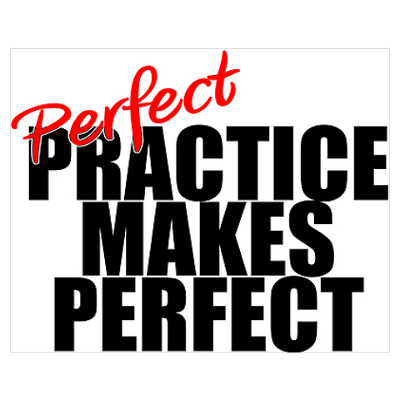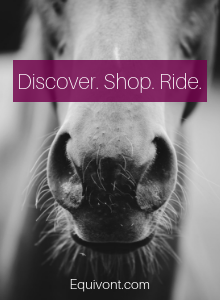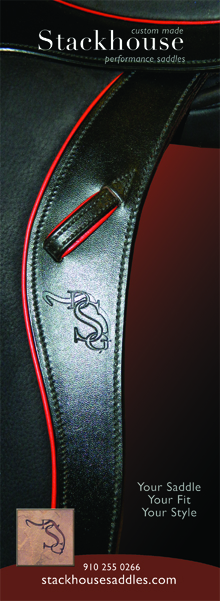Search the Site
Ruth's Blog post # 1: Perfect Practice Makes Perfect

What is Muscle Memory?
If you've ever worked on your posture or a set of aids for a movement on your horse, you've probably heard the words "muscle memory.” But what is this mysterious thing? Is it something real or just a part of dressage riders’ folklore? Can we do anything to make our learning more efficient, or should we be suspicious of "automatic" riding as less creative?
Discursive and Procedural Memory
Psychologists distinguish between two kinds of memory: discursive and procedural. Discursive memory is the kind of memory you use when you learn a fact you can later repeat; an example would be memorizing a pattern or dressage test. This is important, but not what we are talking about for "muscle memory."
The second kind, procedural memory, is about our ability to "just do" things without analytically recalling facts about what to do. Think about riding a bicycle, catching a ball, typing on a computer keyboard or playing a tune on the piano. All these are things you once couldn't do and had to learn, but you don't have to remember facts when you do them. It's as if your ability to do them is somehow "burned into" your brain.
How Procedural Memories Are Made (from now on I'm just going to call it "muscle memory")
There are three phases in developing muscle memory:
1. The first is the "cognitive" phase, in which we have to consciously think about everything. Think back to the first time you asked your horse to trot. You had to think about how to close your legs, how to keep your balance, how to hold the reins and not pull back, how to decide what diagonal you were on and probably a dozens of things – and the task of remembering, and executing them, all seemed impossible.
That's because it is impossible! Nobody can ride a horse or a bike or play a guitar or anything else that way! Unfortunately, the cognitive phase is the first step of the process and can't be bypassed, because you have to know WHAT to do not in order to practice it until you don't have to think about it. This happens during the "associative phase.”
2. During the associative phase, many instructions come frequently from your teacher to start to combine individual actions into a single, larger pattern, for example, to "pick up the trot" rather than all those fragmented instructions we started with. During this phase, a larger picture of the task is made by repeating it many times. Things that seemed important (and impossible) start to come together into a single action. At least, that's the idea. Now . . . trot.
The cognitive phase is the hard part of learning that involves discursive memory. My students will often say things like, "Yes, I know I need to keep my heels down, I just seem to forget,” or “I can't get my heels down AND close both my legs to trot.”
The associative phase is much more rewarding: the students feels as if they are "starting to get it,” and sees real improvement.
3. This encourages more practice, and more practice leads us closer to the final, "autonomous" phase in which the action can be carried out more or less sub-consciously.
Any horseback rider beyond the raw beginner stage will have different skills at different phases. Maybe you having been riding for a year now and picking up the trot is a non- issue. Maybe next year you will be half-halting during a trot transition and then asking for more in a medium trot. Maybe the year after that you may be applying a half halt at the end of an extended trot, during a transition while asking for passage! All these actions are layers of skills that were initially started in that first trot transition.
Where Things Go Wrong
We acquire new riding skills by first explicitly learning the details of what to do (cognitive), then repeating them until they become a single action (associative, leading to autonomous). But things can go wrong.
The best-known example is summed up in the well-worn phrase, "Practice doesn't make perfect; perfect practice makes perfect.” If we rush the cognitive phase, we may well fail to properly learn all the components of the skill before we start practicing it a lot and things will go wrong. Basically, when you practice something incorrectly, you’ll get very good at doing it wrong. You will have created a muscle memory for the wrong action.
How to Practice
When you are (or your horse is) learning a new skill, recognize you're in the cognitive phase; this can be a frustrating stage and shouldn't be rushed through. Work methodically and be ultra-conscious of everything you do. Look for details and attend to them. Always go back to things you already know how to do and look at your basics. How is my posture? Is my horse relaxed? Am I relaxed? Am I on the circle I intended to be on? Is my horse on the bit? If you’re planning to work on a new skill, and things you have learned (or should have learned) BEFORE are not in order, then your new set of aids or questions will NOT elicit the answer you want.
Are Automatic Responses a good thing?
The "autonomous" phase relates to our physical and mental ability to perform the task. It doesn't relate in any way to our choice about which task to perform or where. Being able to ride a bike without thinking about it doesn't have anything to do with where we choose to ride it, or what else we are doing while we are riding the bike.
Having automatic responses actually frees us up to think about the more artistic aspects of riding.The biggest example I can think of is the musical Freestyle. When the horse and rider are a team with their communication, and their responses are "automatic,” that leaves the rider with time to be more creative and express the music with the horse.






